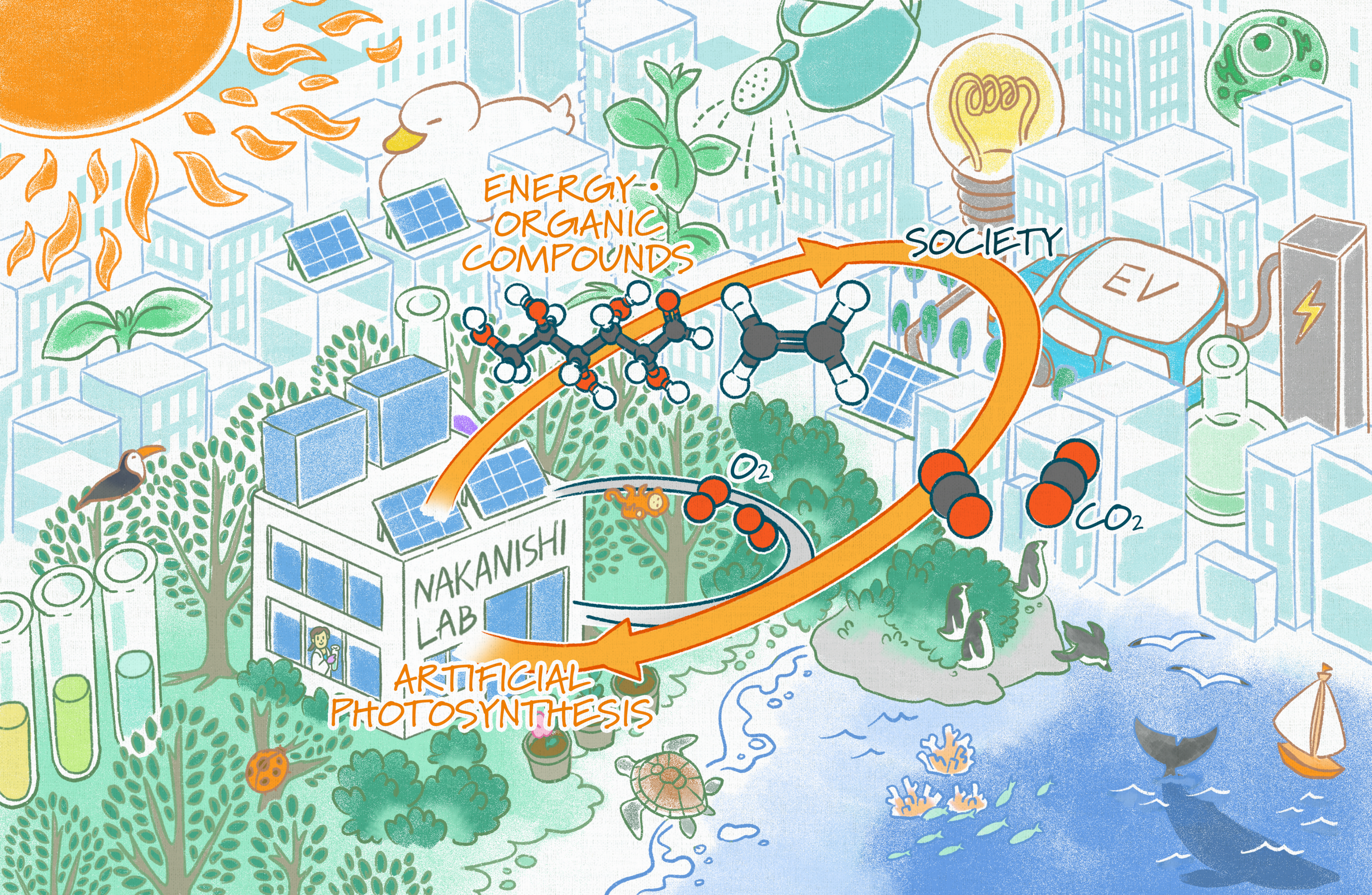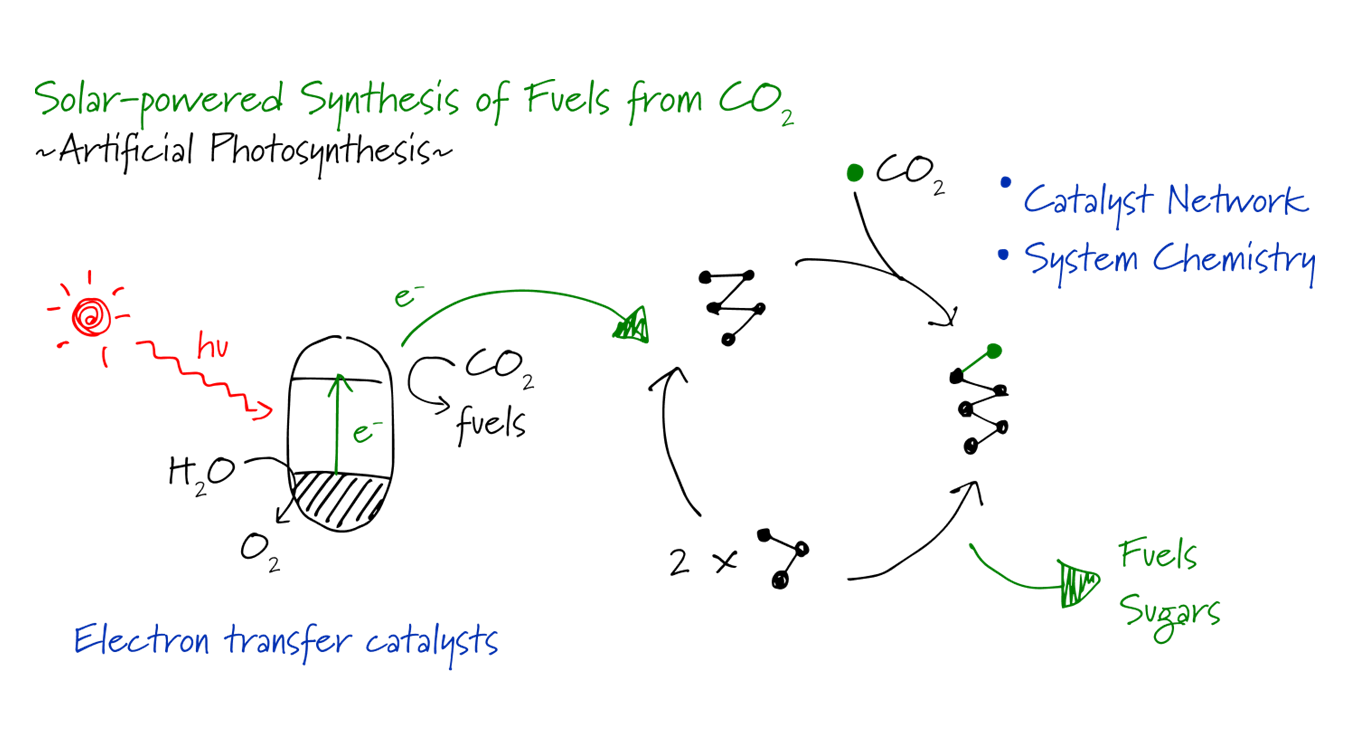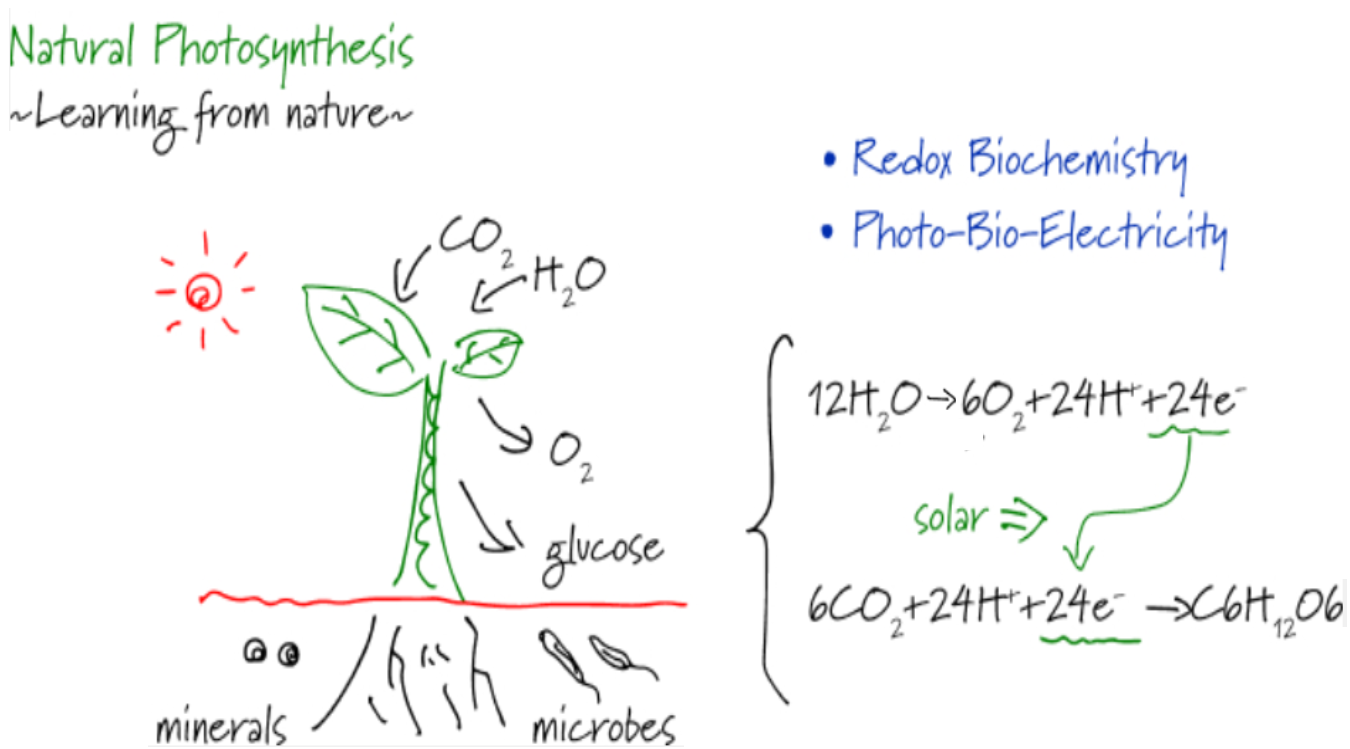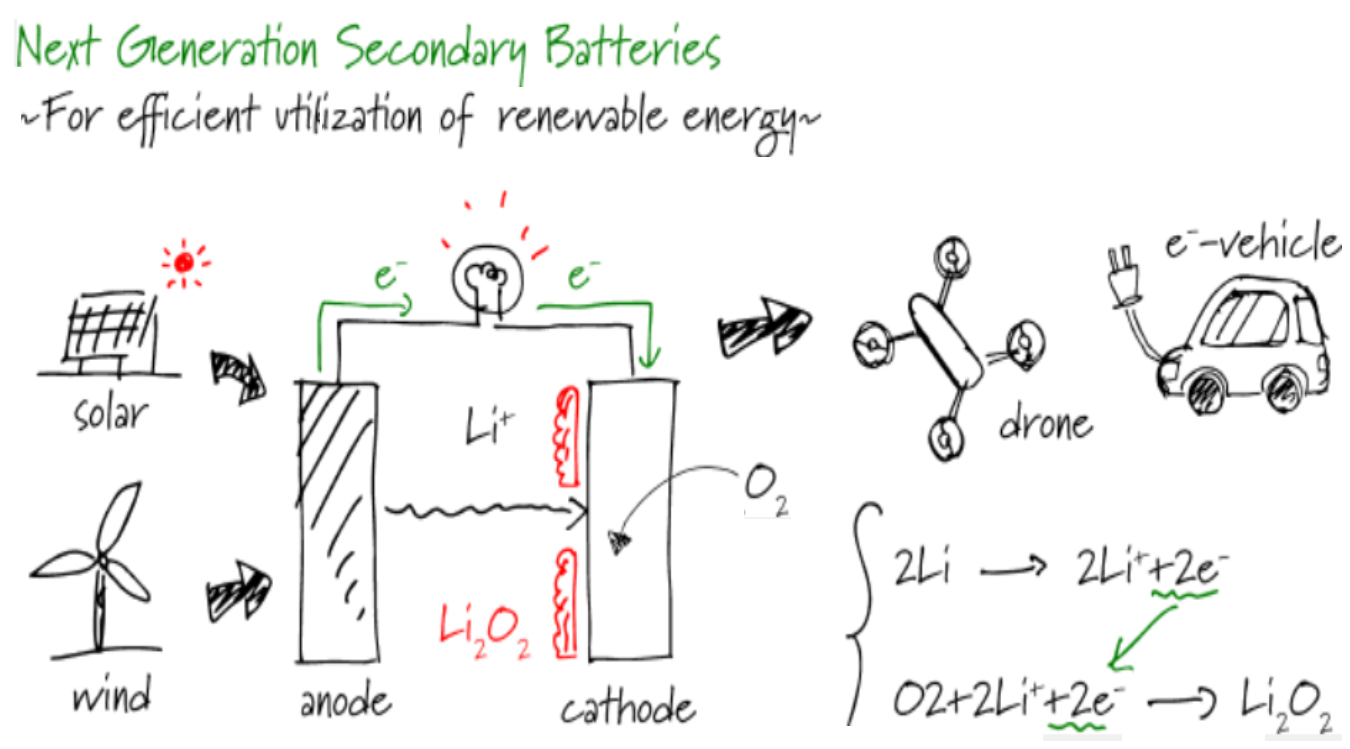

In modern society supported by mass consumption of fossil fuels, large amounts of carbon dioxide are released into the atmosphere. Solar-powered reduction fixation of carbon dioxide into valuable substances (i.e., artificial photosynthesis) is necessary for our sustainable society. We are challenging this magnificent mission based on chemical approaches. For achieving carbon dioxide fixation efficiently using solar energy, we need visible-light absorbing materials and electron transfer catalysts. From a practical viewpoint, such materials should be constructed without precious metals or rare elements. Our group is researching ways to utilize earth abundant elements for developing such materials with superior activity, selectivity, and stability.
・Artificial Photosynthesis
・CO2 Electrolysis
・Photo-functional materials
・Electron transfer catalysts
・Systems Chemistry
化石燃料の大量消費に支えられている現代社会においては、大量の二酸化炭素が大気中に放出されています。太陽光エネルギーによる二酸化炭素の有価物質への還元固定化、すなわち人工光合成は、持続可能性社会の実現のために人類が必ず手に入れなければならない技術です。私たちは、この壮大なミッションに化学の力で挑んでいます。
一般に、効率的な太陽光エネルギーの化学エネルギーへの変換を実現するためには、太陽光スペクトルに豊富に含まれる可視光を吸収する材料、ならびに二酸化炭素や水素イオンの還元反応などの電子移動反応を効率的に進める触媒材料が必要です。環境・エネルギーの観点からは、こうした材料を貴金属や稀元素に頼っていると意味がありません。私たちは、環境調和性を第一に考え、地球上に豊富に存在する元素から成り、その上で、有意な特性(光吸収特性、触媒活性・選択性・安定性)を示す光吸収材料および電子移動触媒材料の開発を進めています。
・人工光合成 ・電解還元によるCO2の資源化 ・光機能性材料 ・電子移動/電極触媒材料 ・システムケミストリー
・人工光合成 ・電解還元によるCO2の資源化 ・光機能性材料 ・電子移動/電極触媒材料 ・システムケミストリー

Light-chemical energy conversion in natural photosynthesis consists of a two-step process: light-dependent light reactions and light-independent dark reactions. In the light reactions, NADPH (reducing equivalent) and ATP (chemical energy) are produced via electron transfer chain reactions and photo-induced charge separation. The photo-generated NADPH and ATP are used for reductive fixation of carbon dioxide into organic substances in the subsequent dark reactions. In natural photosynthesis, the quantum efficiency of the light energy conversion reactions can reach almost 100% under optimized conditions. In addition, the photosynthetic system has various dynamic functions such as adaptation to changing light environments. Deeper understandings of the chemical mechanism of such dynamic functions leads to the realization of a “new artificial photosynthesis systems” that can work efficiently even in changing natural environments. We are challenging on unraveling the chemical mechanism of light-chemical energy conversion in natural photosynthesis using techniques such as electrochemistry, material chemistry, and molecular biology.
・Photosynthetic electron transportation
・Photo-adaptation in photosynthesis
・Chemistry on photosynthetic ecosystems
光合成における光-化学エネルギー変換は、光に依存する明反応と光に依存しない暗反応の2段階のプロセスから成ります。明反応においては、光による電荷分離から始まる電子移動反応の連鎖により、NADPH(還元力)とATP(化学エネルギー)が作り出されます。光生成したNADPHとATPは、その後の暗反応において二酸化炭素の糖などへの還元固定化に利用されます。光合成には、エネルギー変換の量子収率が高いという特徴に加え、動的な環境適応機能や自己修復機能などの「生き物らしい機能」が備わっています。こうした光合成における高度な機能はどのような化学プロセスに支えられているのでしょうか?その本質を理解することは、変動する自然環境下でも全体調和的に機能する、まるで植物のような「新しい人工光合成システム」の実現に繋がります。私たちは、電気化学・材料化学・分子生物学などの手法を駆使し、光合成における光-化学エネルギー変換の仕組みを解き明かすことに挑戦しています。
・光合成電子伝達
・光合成の光環境適応
・光合成生態系の化学

Solar cells are the core technology for using solar energy in modern society, and many solar cells with high energy conversion efficiency have already been developed. However, because the output of solar cells is varied by the change of the weather, the development of next-generation and high-performance secondary batteries that are able to provide a constant, non-fluctuating supply of electricity is needed for the further spread of the technology. We are currently engaged in developing Li-metal secondary batteries, which are a promising next-generation secondary batteries.
・Lithium-air secondary battery
現代社会における太陽エネルギーの利用の中核技術が太陽電池であることは言うまでもありません。既にエネルギー変換効率の高い太陽電池が数多く開発されています。しかし、太陽電池の出力は天候に大きく左右されるため、太陽電池の本格的な社会実装を図る上では、変動する発電量を吸収する高性能な次世代二次電池の開発が不可欠です。特に、移動媒体への搭載が可能な高エネルギー容量・高エネルギー密度の二次電池の開発は、太陽電池の活躍の場の飛躍的拡大に繋がります。こうした観点から、私たちは、有望な次世代二次電池の一種である金属負極二次電池の開発を産業界と連携して進めています。
・リチウム酸素二次電池




